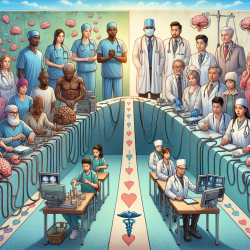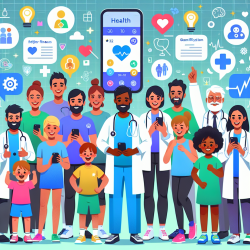Transformative Learning: A Path to Better Outcomes in Medical Education
In the realm of medical education, the integration of transformative learning principles can significantly enhance the training of future healthcare professionals. The research article titled "Teaching poverty and health: importing transformative learning into the structures and paradigms of medical education" offers valuable insights into how medical education can be reformed to address social inequities and improve outcomes for marginalized groups. This blog post will explore the key findings of the study and how practitioners can implement these insights to enhance their educational practices.
Understanding Transformative Learning
Transformative learning is an educational paradigm that emphasizes equity and social justice. It aims to inspire learners to become agents of social change by challenging existing societal structures. In the context of medical education, transformative learning seeks to equip future physicians with the knowledge and skills needed to address the social determinants of health (SDOH) and advocate for marginalized populations.
The University of Toronto's Workshop on Poverty and Health
The University of Toronto implemented a workshop on poverty and health as part of its MD program, aiming to integrate transformative learning principles into the curriculum. The workshop involved health professional tutors and tutors with lived experience of poverty, providing students with a deeper understanding of poverty through narrative experiences. This approach sought to foster dialogue and reflection on issues of equity and social justice.
Key Findings and Implications
- Misalignments in Educational Structures: The study found that traditional roles and hierarchies within medical education often hinder the transformative potential of such workshops. Despite efforts to place lived experience tutors on equal footing with health professionals, structural factors like insufficient feedback and limited interaction time perpetuated existing hierarchies.
- Unintended Consequences: While the workshop aimed to be transformative, it sometimes led to unintended consequences, such as increased stigmatization and conflicting messages. These outcomes highlight the need for careful consideration of how transformative education is implemented within existing educational paradigms.
- Opportunities for Improvement: To enhance the transformative potential of medical education, the study suggests providing more interactive opportunities for students to engage with marginalized populations and offering feedback to lived experience tutors. These steps can help dismantle traditional hierarchies and create more meaningful learning experiences.
Implementing Transformative Learning in Practice
For practitioners looking to improve their educational practices, the findings of this study offer several actionable insights:
- Foster Dialogue and Reflection: Encourage open discussions and critical reflection on social justice issues within the curriculum. This can help students develop a deeper understanding of the SDOH and their role in addressing health inequities.
- Integrate Diverse Perspectives: Include voices from marginalized communities in educational settings to provide students with a more comprehensive understanding of social issues. This can be achieved by involving individuals with lived experiences in teaching roles.
- Challenge Existing Structures: Work towards modifying educational structures that reinforce oppression. This may involve reevaluating traditional hierarchies and creating spaces where diverse forms of knowledge are valued.
By embracing transformative learning principles, medical educators can play a crucial role in shaping future healthcare professionals who are equipped to address social inequities and advocate for marginalized populations. For those interested in delving deeper into the research, I encourage you to read the original paper: Teaching poverty and health: importing transformative learning into the structures and paradigms of medical education.










